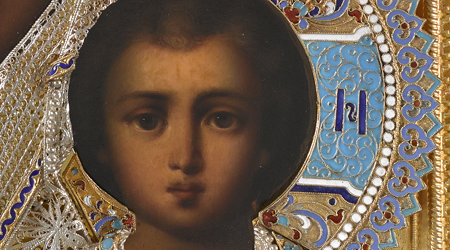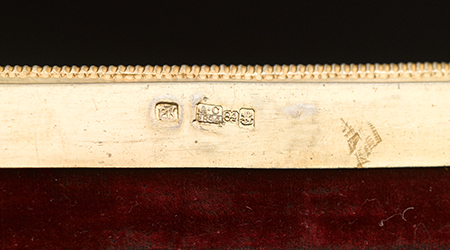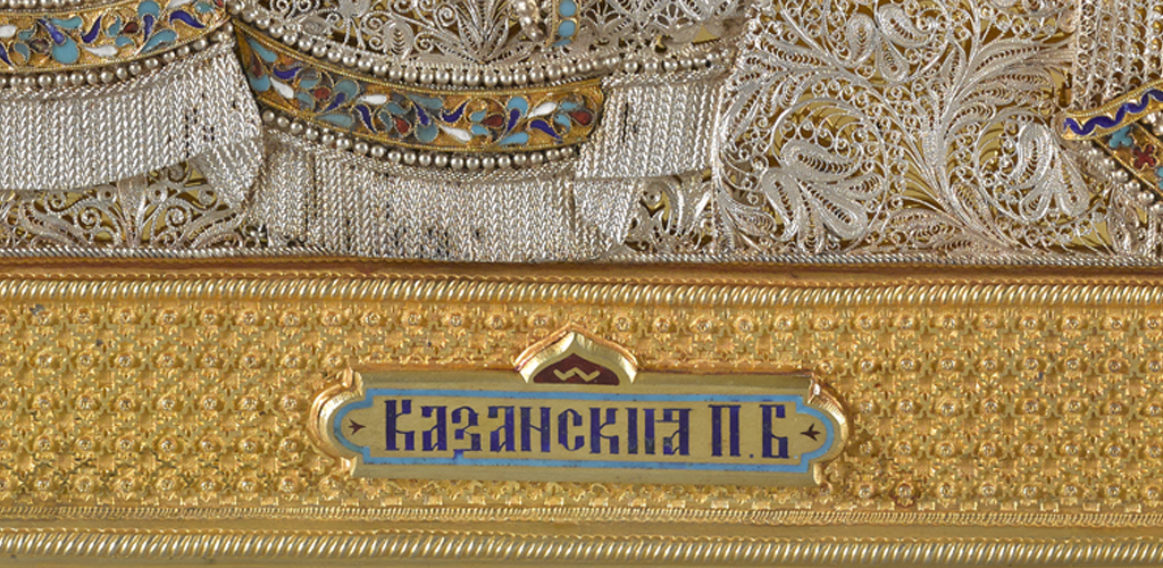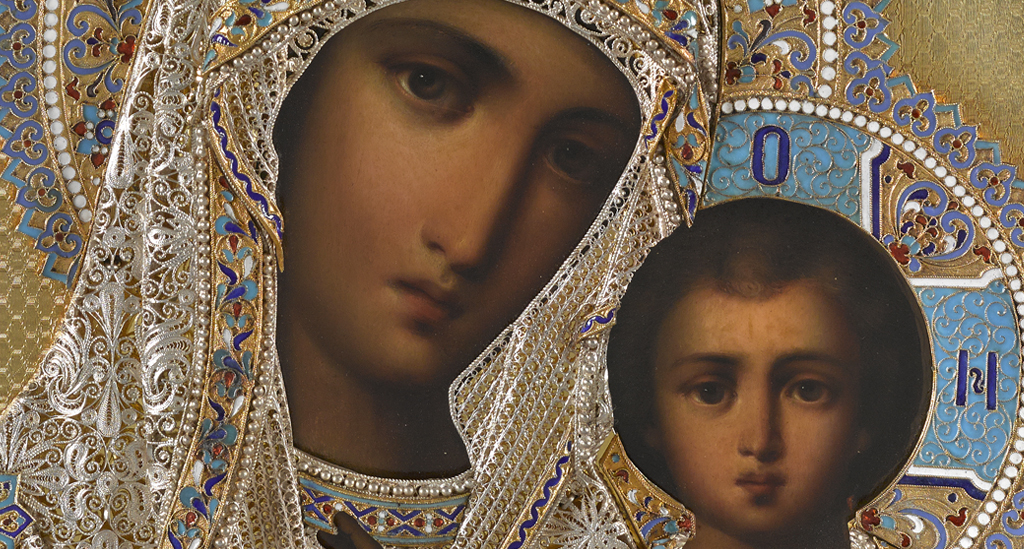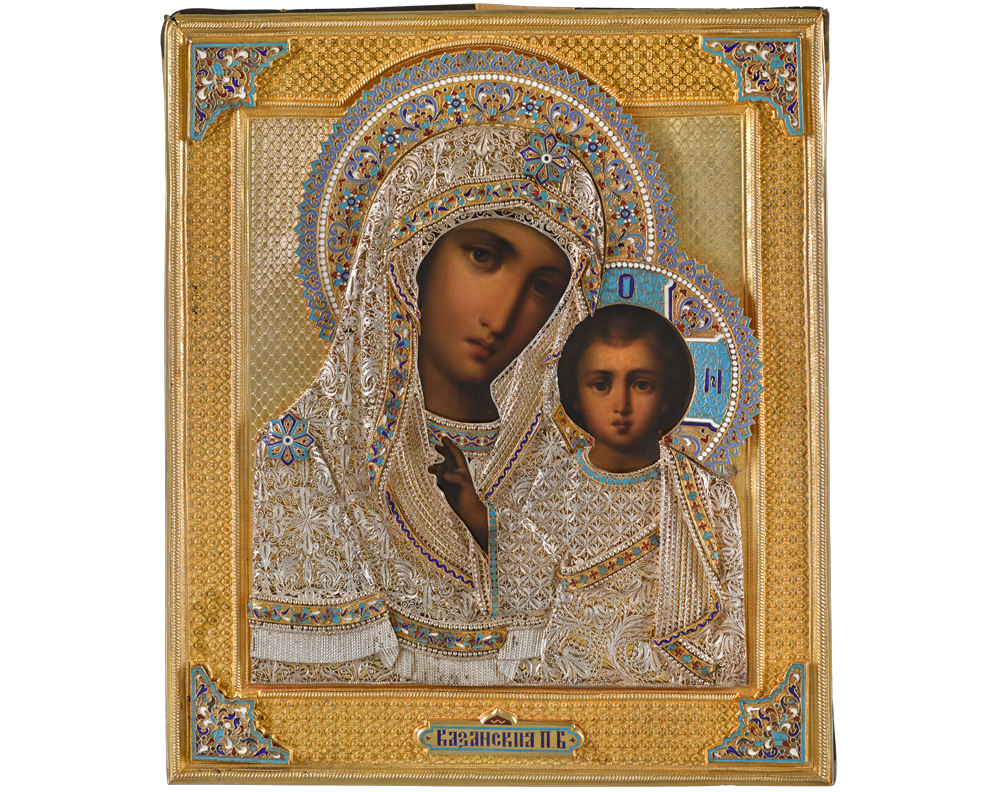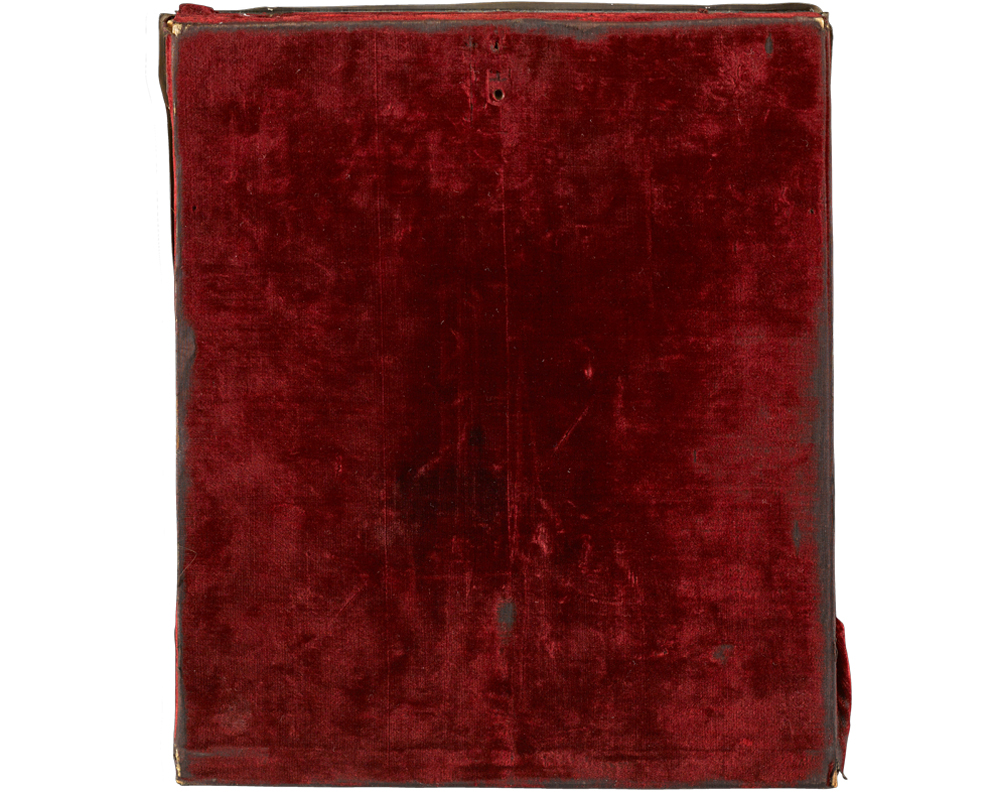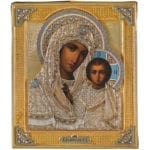Painted in a soft realistic manner, the icon is encased in a silver-gilt repoussé and engraved oklad; the halo and corner mountings are enamelled with bright polychrome floral ornament against a stippled gilt ground; the robes of the Virgin and Christ Child are worked in a delicate silver filigree trimmed with enamel. The bust-length figure of the Virgin is shown with the Christ Child on her left arm inclining her head towards her son. Christ is standing upright with his right hand raised in benediction.
The Mother of God of Kazan, a variant of the Greek Hodegetria, is one of the oldest and most venerated images in Orthodox Christianity. The icon of the Mother of God of Kazan is celebrated on July 8th and October 22nd, commemorating its apparition in 1579 in the city of Kazan – formerly the capital of the Tatars – shortly after the city had been conquered by Tsar Ivan IV “The Terrible”.
According to the tradition, the icon was discovered by a child, Matrona. It was said that the Virgin Mary herself, in an apparition, revealed the object’s underground location to the girl. The original icon was kept in the Theotokos Monastery of Kazan, which was specially built to commemorate the spot where it was discovered.
